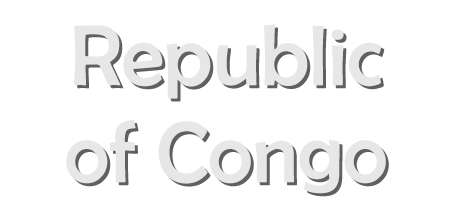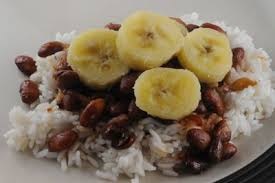
Also known as the Congo–Brazzaville, the Republic of Congo can be described by its natural and simplistic beauty, dense forests, exotic plants, unusual creatures, diverse wildlife and being home to the apes. The world’s second largest rain forest after the Amazon, the rain forest of Congo is known as lungs of the world, crucial for the survival of humanity. The clear sky, birds of the night, the dance of the fauna and the perfume of the flowers all add a touch to its beauty. A visit to Congo is an uncompromising trip, travelling through one of the last wilderness of the earth. Not to forget are the gentle giants of the forests, the Gorillas, found only in this part of the planet. It is the land of the pygmies, the tribe unique to only this part of the earth. Blessed with natural wealth of diamonds and silver and its priceless biodiversity, the Congo nation can be considered as God’s own land. The friendly locals add to the comfort and warmth of the country. Let us learn more about the country.
The Republic of Congo is a country in Central Africa bordering the South Atlantic Ocean and lies between Angola and Gabon. It shares its borders with Angola (231 km), Cameroon (494 km), the Central African Republic (487 km), the Democratic Republic of Congo (1,229 km) and Gabon (2,567 km).Covering a total area of about 342,000 sq. km, land occupies about 341,500 sq. km and area occupied by water is about 500 sq. km. It lies between the geographic coordinates 1°00’S latitude and 15°00’E longitude. Stretching a coastline about 169 km, it is slightly smaller than Montana and comparatively ranks 64th in the world.

The country enjoys a tropical climate. The rainy season lasts from March–June and the dry season from June–October. As it lies close to the equator, persistent high temperatures and humidity mark its climate. The terrain includes coastal plains in the southern basin while the central plateaus cover the northern basin of the river Congo. The lowest point of elevation is the Atlantic Ocean at 0 m and the highest point of elevation is Mount Berongou at 903 m. Available natural resources are petroleum, potash, timber, lead, zinc, uranium, copper, phosphates, gold, magnesium, natural gas and hydropower. The country faces environmental issues such as seasonal flooding, air pollution from vehicular emissions, water pollution from raw sewage, unsafe drinking water and deforestation.

The tropical rainforests support the dense growth of African oak, red cedar, walnut, softwood oakum or gaboon mahogany and hardwood limba along with leafy plants and vines. Coconut palms, mangrove forests, tall grasses and reeds grow in the coastal regions and eastern swamps. The plateaus and the Niari valley are covered with broad–leaved trees and grass. A variety of monkeys, chimpanzees, gorillas, elephants, okapis, wild boars and buffaloes live in the rain forests. The savannah region includes antelopes, jackals, wild dogs, hyenas and cheetahs. Lions are scarce but giraffes and rhinoceros are numerous on the plateaus. Species of birds such as eagles, hawks, owls, vultures and wading herons are found here. Freshwater fish includes perch, catfish, sunfish and mudskippers. The Congo is full of crocodiles. Reptiles also include poisonous snakes such as cobra, green mamba, puff adder and species of python. The fatal tsetse fly causing sleeping sickness in humans and cattle is found here along with mosquitoes which cause malaria and yellow fever.

The urban Congolese are richer as compared to the rural population and pygmies who face discrimination. Discrimination based on race or sex is illegal and equal pay for equal work is mandated but women are still underrepresented in the job sector. They are responsible for all the household chores and child rearing. Arranged marriage is less common in the cities unlike before, when it was a tradition. A very high bride–price is fixed which has to be paid by the groom. This bride–price has to be returned if bride is not chaste or when the divorce takes place. Divorce is a male option along with polygyny but polyandry is illegal. Extended families are the basic units of families. Inheritance is matrilineal where the maternal uncle plays an important role. Taking care of infants is a female responsibility. Adult literacy is around 70%. Congolese take pride in their dress and appearance. Social interactions are associated with a degree of formality. Older people are shown respect. The Congolese are known for their singing and rumba style of dance.

The chief religion practiced by the Congolese of the Republic of Congo is Christianity (about 33%). However, other sects include the Awakening Churches/Christian Revival, Protestants and Salutiste. Muslims, Kimbanguiste and other minority groups also form a part of the population. French is the official language whereas Lingala and Monokutuba are the lingua franca trade languages. From the many dialects and local languages, Kikongo is the most widely used.

The rain forest soil of the Republic of Congo is not very fertile or rich in nutrients. Land under cultivation is less than 3 %. Hence, there is less availability of crops and fruits. Meat is expensive as it is usually hunted or imported and is hence, eaten on occasions. The staples are bananas, pineapples, taro, peanuts, manioc, cassava, rice and bread. There are food taboos depending upon the tribe and village. Any animal considered a spiritual protector is not eaten. Meat and chicken is eaten only during major festivals or celebrations. Plum wine and beer are also consumed in the festivities.

The economy of the Republic of Congo is a mixture of subsistence farming and hunting, industrial sector, support services and government spending. Oil is the mainstay of the economy after forestry. The government is faced with a difficult challenge of stimulating recovery and reducing poverty. The agricultural produce is cassava (manioc, tapioca), sugar, rice, corn, peanuts, vegetables and coffee, cocoa and forest products. Industries that contribute to its development include petroleum extraction, cement, lumber, brewing, sugar, palm oil, soap, flour and cigarettes. The country exports petroleum, lumber, plywood, sugar, cocoa, coffee and diamonds to China, US, Australia and France whereas it imports capital equipments, construction materials and foodstuffs from China, France, Italy, US, India and Belgium.

G Kowledge of | 0 Comments >>
0 Comments
Leave Comment
Your email address will not be published. Required fields are marked.